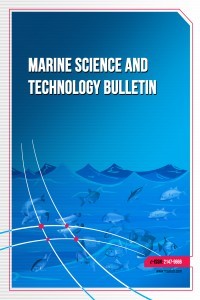
Marine Science and Technology Bulletin
Yazarlar: ["Ufuk Yakup ÇALIŞKAN", "Burak ZİNCİR"]
Konular:-
DOI:10.33714/masteb.1159477
Anahtar Kelimeler:Aerosol Effects,Air Pollution,Formaldehyde,Greenhouse Gas Emissions,Satellite Imagery Sensors,Shipping Corridors,Maritime Transportation
Özet: One of the reasons that anthropogenic greenhouse gas emissions estimation is imprecise is the uncertainty of aerosol impacts on cloud properties. Maritime transportation is slowly changing fuel preferences. With the policy framework changing regulations, the shipping business is going in a direction that emits less sulfur dioxide and black carbon, which are the compounds that cause linear cloud formations known as ship tracks. Aside from their effects on the total radiative forcing of a transportation mean, this phenomenon enables the detection of ships via satellite imagery sensors. The rapidly increasing trend of shifting propulsion of maritime transportation from conventional heavy fuel oil and distillate marine fuels to liquefied natural gas causes enormous hikes in methane emissions. Therefore, oxidation of the volatile organic compound in the marine boundary layer by the hydroxyl radical in the troposphere makes significant deposition of formaldehyde which causes human effects, ecosystem damage, and climate impact. The primary triggering substance among the compounds in the ship plume is methane. This paper discusses methods to assess near real time tracking of anomalies and the deposition of the short lived substance in different seasons in one of the main occurring areas, shipping corridors. The study also employs anomaly map analysis for June and December 2010 and 2020. Several global tracking methods are available with satellites, monitoring experiments, and other satellite tracking tools. Apart from a few areas the results are not indicative since the formaldehyde formations caused by LNG fueled ships are not widespread enough alongside with overall LNG fueled fleet. On the other hand, the analysis and method are promising for the follow-up of the emissions in the future.